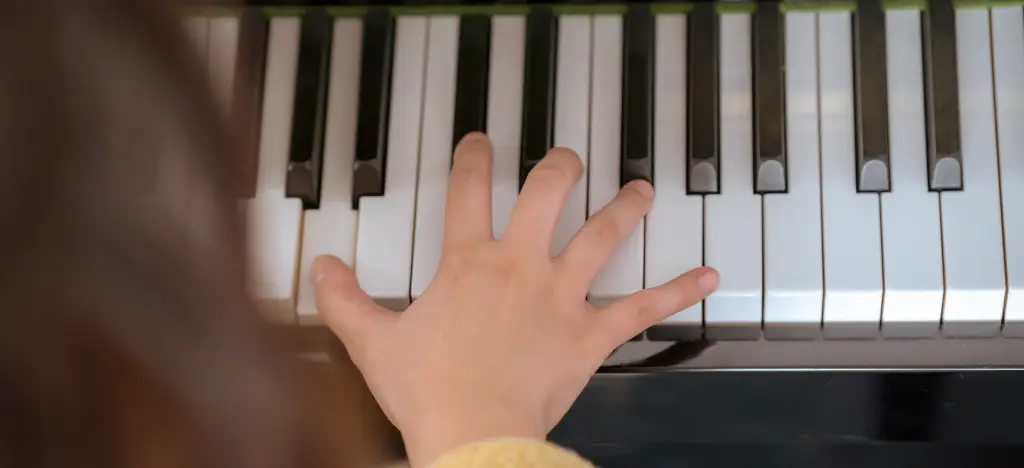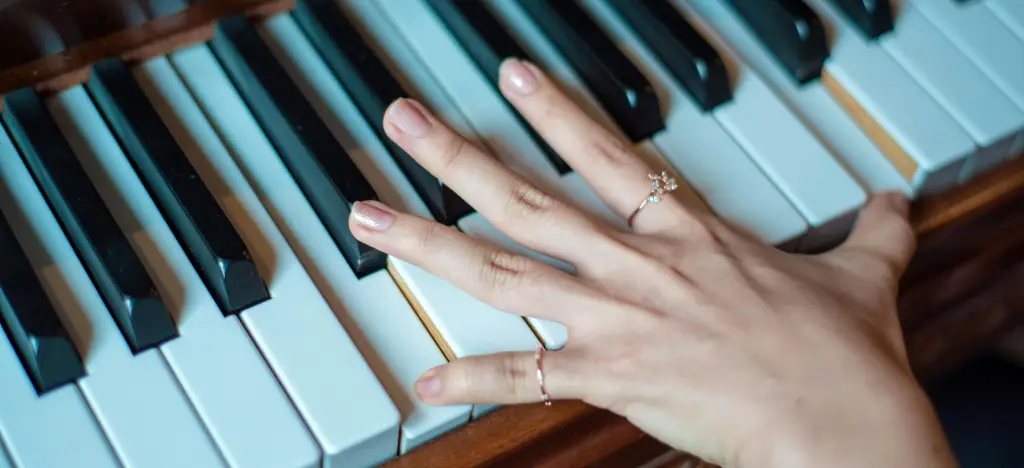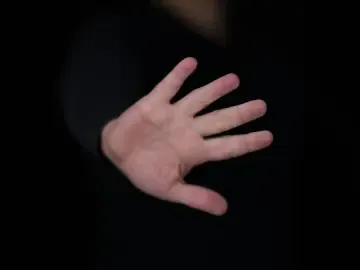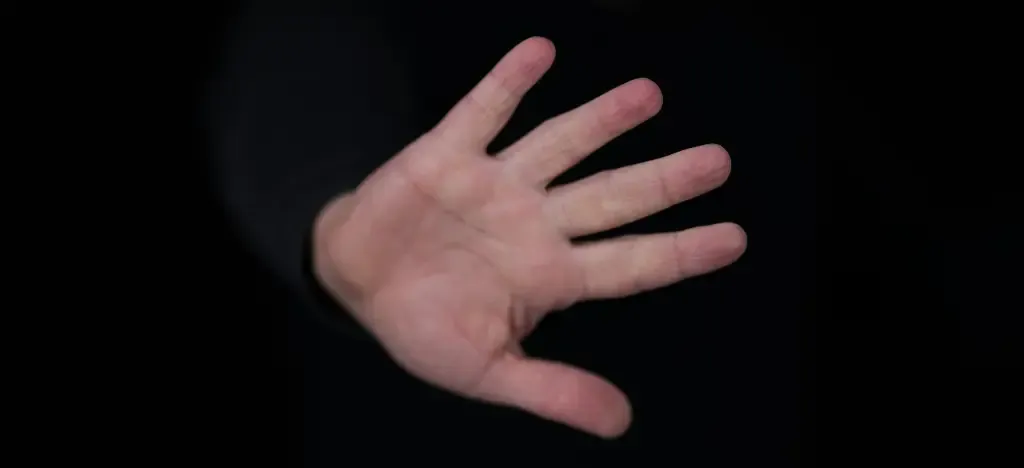Playing piano with one hand isn’t a shortcut — it’s just a smart way to get started. It takes the pressure off and lets you focus on what matters: the sound, the rhythm, the feel. With just one hand, you can play a melody, build a bass groove, or simply enjoy the feel of the piano.
And you don’t need drills or nursery rhymes to get started. So, if you're a beginner and want something simple but satisfying to play, I’ll show you one-hand parts — left and right — taken from real songs that help you build confidence and finger strength as you go.
- Why one-hand practice actually helps you get better
- Right-hand piano melodies
- Left-hand piano patterns
- What to do next?
- Learn to play your first song for free
Why one-hand practice actually helps you get better
Practising with just one hand isn’t about being lazy — it’s actually one of the best ways to improve fast. You focus more. You listen more. You build strength and control in each hand separately, which makes everything easier when you do start playing with both.
Benefits:
Builds finger independence
Trains your ear to hear melody and bass separately
Boosts confidence because you can sound musical early on
Helps you stay focused instead of getting overwhelmed
💡 ARTMASTER TIP: If you are a complete beginner on the keys, it is worth checking out our step-by-step guide. It covers everything you need — from finding middle C to playing your first melody.
Right-hand piano melodies
 This section is all about vocal melodies and iconic hooks. You’re playing the part people recognise — the bit that gets sung back at festivals or shouted in the car.
This section is all about vocal melodies and iconic hooks. You’re playing the part people recognise — the bit that gets sung back at festivals or shouted in the car.
The best part? You don’t need backing chords to make them sound good. We’ll break each one down with lyrics and matching notes, so you can learn them even if you’ve never read sheet music in your life.
Blinding Lights – The Weeknd
Part: Chorus
Key: A minor (simplified)
This synth-driven melody is pure '80s energy. And it works great on piano — even just with your right hand.
Lyrics: I said ooh, I’m blinded by the lights
Notes: E E G A C C A G
Lyrics: No, I can’t sleep until I feel your touch
Notes: E E G A C C A G
🎧 How to play it: Go for a clean, detached feel. Use your sustain pedal sparingly — a little goes a long way. Repeat this pattern twice and you’ve got the whole chorus down.
Ocean Eyes – Billie Eilish
Part: First verse
Key: A minor
Understated, beautiful, and very playable. This one works well if you slow it down and let the melody breathe.
Lyrics: I’ve been watching you for some time
Notes: E D B G A A G
Lyrics: Can’t stop staring at those ocean eyes
Notes: G B A G E F G
🎧 How to play it: Keep the touch light. Add a bit of delay or reverb if you’re using a digital keyboard — it suits the track’s dreamy feel.
Someone Like You – Adele
Part: First verse
Key: A major
This melody is surprisingly simple — it’s all in the phrasing and emotional delivery. You only need a few notes, but the way you play them matters.
Lyrics: I heard that you’re settled down
Notes: A B C# B A F#
Lyrics: That you found a girl and you’re married now
Notes: E D# E B A G# A F#
🎧 How to play it: Let each note ring clearly, and don’t rush. Play it as if you're singing it in your head — it helps your timing feel natural.
Clocks – Coldplay
Part: Intro riff
Key: Simplified to C major feel
You know this one instantly. It’s repetitive but hypnotic — and perfect for developing rhythm and finger control.
Looped phrase:
E G A E G B
E G A E G B
🎧 How to play it: Use the pedal to smooth it out. This one feels best when you get into a groove and let it roll.
Für Elise – Beethoven
Part: Opening motif
Key: A minor
It might be classical, but it's also a classic. The first nine notes are iconic — and surprisingly beginner-friendly.
Notes: E D# E D# E B D C A
🎧 How to play it: Keep your hand relaxed and move slowly. Once you’ve got this intro, you’ll feel like a proper pianist.
💡 ARTMASTER TIP: Using letters to play piano is a great way to start, find out other ways to learn piano without reading sheet music.
Left-hand piano patterns
 Most people think of the left hand as “just chords” — but it can do a lot more. These patterns give you that rich, rhythmic low-end sound that makes solo piano feel complete.
Most people think of the left hand as “just chords” — but it can do a lot more. These patterns give you that rich, rhythmic low-end sound that makes solo piano feel complete.
If you’re a lo-fi producer, a singer, or just want to get playing, these patterns are great for practice or even jamming over with your right hand. Try switching them up, combining styles, or creating your own variations.
Root – Fifth – Octave
Inspired by: Coldplay, The Cinematic Orchestra
In C major:
C G C (octave) — then repeat
🎧 How to play it: Use your pinky, middle, and thumb. Let the pedal hold the sound as you move to F or G for a chord change.
Minor bounce groove
Inspired by: Lo-fi beats, ambient hip hop
In A minor:
A E G — pause — A E G
🎧 How to play it: This has a great lo-fi loop feel. Add a simple right-hand improvisation over the top for instant chill.
Reggaeton-style bass
Inspired by: Despacito, Tropical House
Try this pattern:
C G A F
🎧 How to play it: Play the notes short and tight. This one’s all about the rhythm — try muting your sustain pedal and getting percussive.
'80s-style octave pulse
Inspired by: The Weeknd, Stranger Things
In E minor:
E E (octave) — D D — C C — B B
🎧 How to play it: Hold each octave for one beat. Use it under any retro melody or to loop on its own — it feels cinematic instantly.
Walking bass (C major)
Classic jazz-inspired movement
Try this run:
C D E F — G A B C
Reverse it:
C B A G — F E D C
🎧 How to play it: Nice and slow. This one works great if you’re improvising with your right hand — or even just humming over the top.
💡 ARTMASTER TIP: Playing with a metronome is one of the best tools for improving your timing, rhythm, and overall technique. Find out why and how in our guide — How to use a metronome: tips for piano, guitar & more.
What to do next?
If you’ve worked through a few of these and they’re starting to feel familiar, don’t rush to find “harder” songs. What will really move your playing forward is learning to adapt and experiment. Try adding a second hand. Try changing the rhythm. Try playing it in a different key. You’re not stuck with one version — you're just getting started.
A few ideas to try:
Add simple left-hand root notes under your right-hand melodies
Shift from single notes to outlining chords (like C – E – G)
Change the rhythm or tempo to make it your own
Try improvising with just 3 or 4 notes in one hand over a bass loop
Play around and see what sounds good — that’s how real players learn
📚 Want to go further?
If you’re looking for your next steps, these articles are a great place to keep going:
These cover everything from learning without sheet music to choosing your first songs, understanding chords, and building up real skills — all without making things complicated.
Learn to play your first song for free
If you’re ready to go beyond single-hand parts and start building real skills at the piano, David Bennett’s Piano 1 for Beginners course is a great next step. It’s designed for total beginners, and it’s all about helping you play real music — not just scales and theory.
You’ll start with simple one-hand melodies, learn the basics of rhythm, and build up to using both hands together — all through well-known songs like Let It Be, Clocks, and Someone Like You. You’ll also get clear explanations of chords, timing, technique, and how to practise in a way that actually works.

